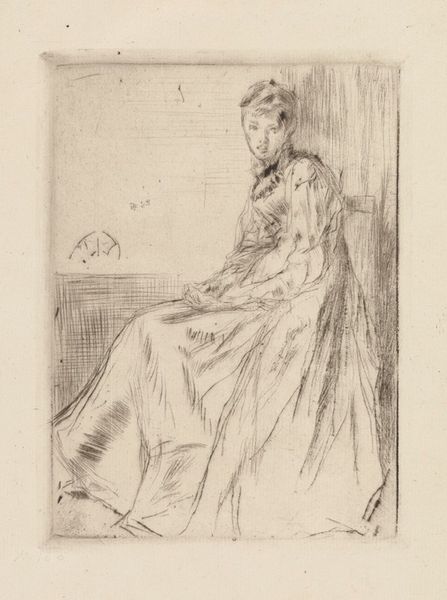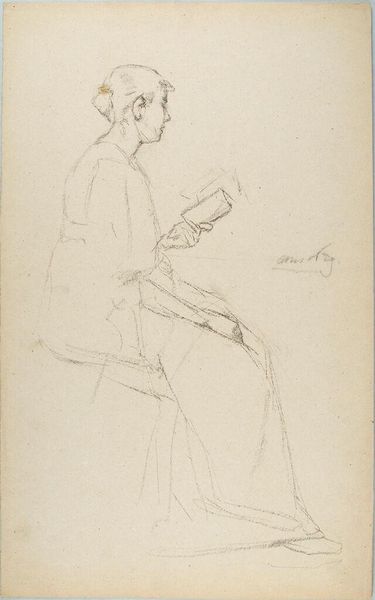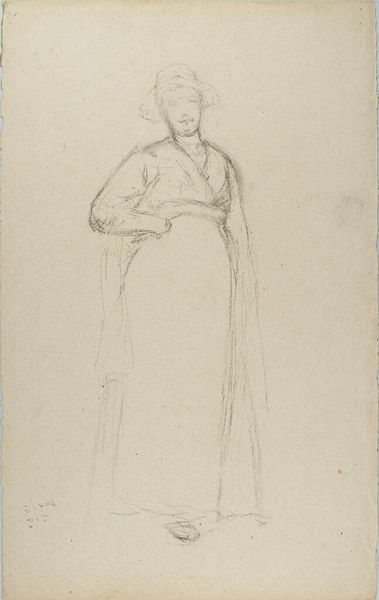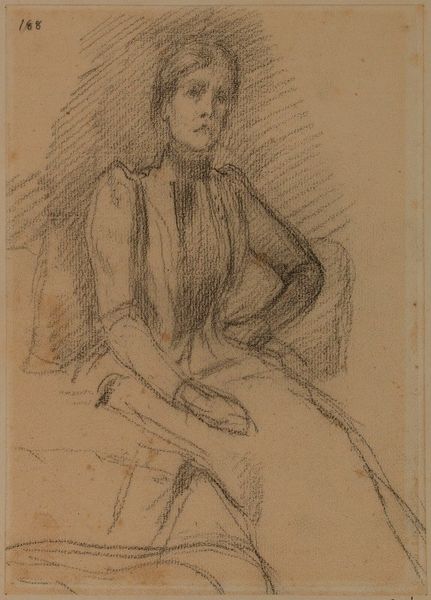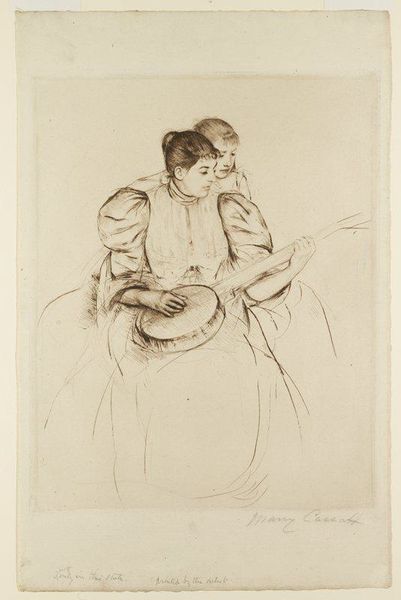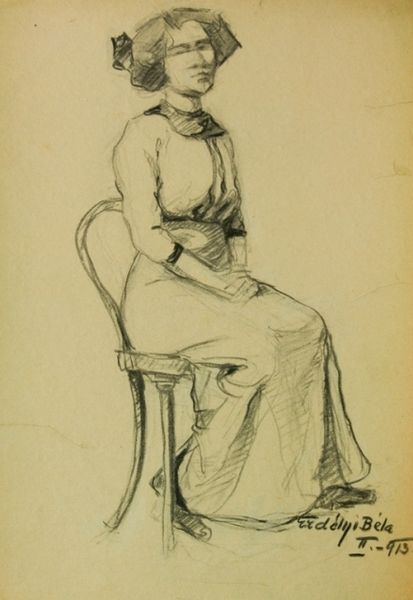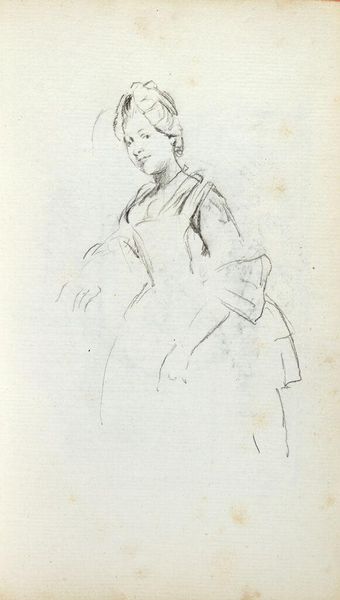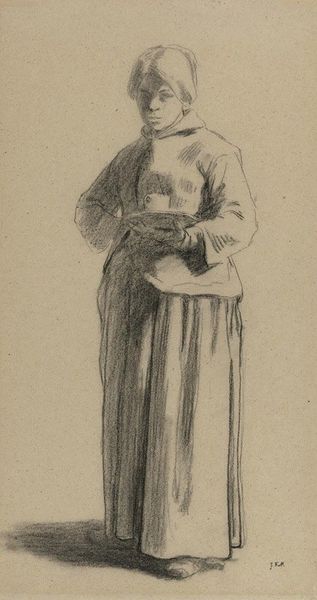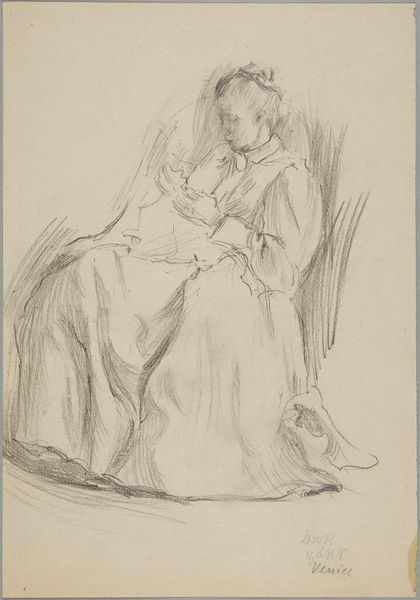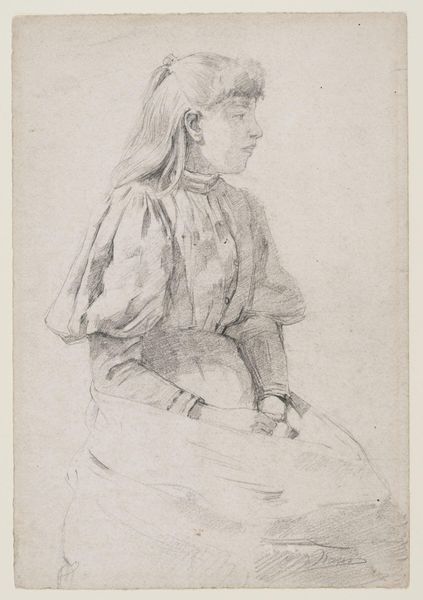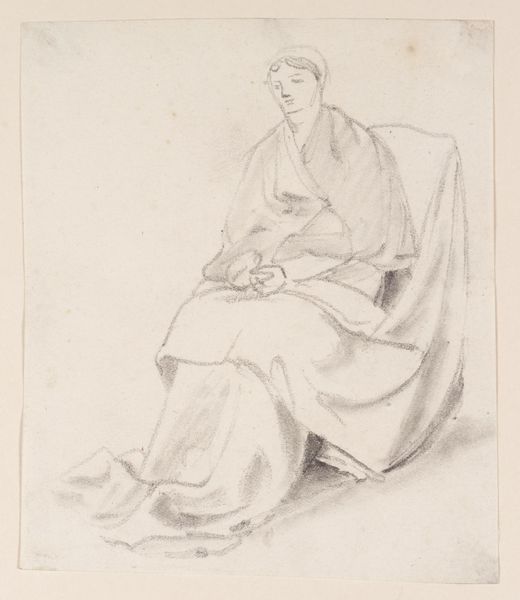
drawing, pencil
#
portrait
#
drawing
#
pencil drawing
#
pencil
#
portrait drawing
Copyright: Public Domain: Artvee
Editor: This is Dante Gabriel Rossetti’s “Portrait of Frances Rossetti, the Artist’s Mother,” a pencil drawing from 1888. I'm struck by how simply it's rendered, almost like a preliminary sketch. What can you tell me about Rossetti’s process and use of materials here? Curator: We need to consider the humble pencil as more than just a tool for preparatory sketches. Pencils, particularly in the 19th century, became increasingly accessible and refined through industrialization. Rossetti’s choice wasn't necessarily about convenience, but perhaps a deliberate reflection on the evolving status of drawing as a valid artistic medium, no longer just subservient to painting. The very texture and tonal range achievable with pencil reflect this societal shift. Editor: So, the material itself, pencil, points to larger cultural changes and Rossetti's potential commentary on the art world? It feels very intimate and domestic. Curator: Precisely! Examine the subtle hatching and cross-hatching, especially in rendering the folds of her dress. These weren't quick, casual marks. They suggest labor and investment in depicting a domestic scene, one of personal importance, elevated not through expensive oils, but the everyday material of graphite. How does this choice impact your interpretation of the artwork as a portrait of the artist’s mother? Editor: That’s fascinating! I had only considered it in the context of art styles, not in light of material access and industrial advancements of the time. Now I see how the choice of pencil reframes it. Curator: Think, too, of the paper. Its availability and quality influenced artistic choices. Rossetti's focus wasn't merely on depicting likeness, but actively engaging with and elevating readily available materials to create something beautiful and enduring. The paper, pencil, and technique reveal a broader understanding of labor and the democratisation of artistic expression. Editor: I see now; looking at the materials and processes truly reveals layers of social meaning. Thanks, that’s completely changed my understanding of the artwork. Curator: And that shift helps us appreciate the quiet revolution occurring within artistic practices and their broader connections to labor and materiality.
Comments
No comments
Be the first to comment and join the conversation on the ultimate creative platform.

